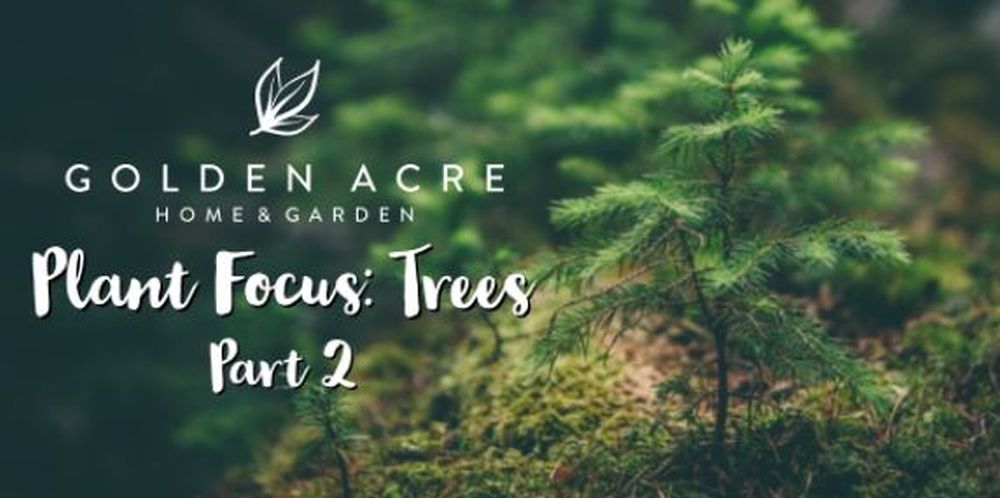I’m sure you’re busy growing beautiful things right now in the garden! Feel free to reach out to us on social media and share your garden! We’d love to see what you’ve been up to and spread some inspiration to the community.
Thank you to everyone who joined our webinar on trees this week. We love hanging out with you and talking about plants. Yes, we’re total nerds! If you missed out, check out the encore presentation now available on YouTube. If you would like to reference Colin’s PowerPoint about trees, click here: Plant Focus: Trees Part Two
Let’s recap important stuff from today’s tree focused webinar
Parts of a Tree
- Roots
- Trunk / Stem
- Branches
- Twigs
- Foliage (Leaves / Needles)
- Flowers / Fruits
- Coniferous – Mostly evergreen, cone-bearing, needly-bearing, softwood, and drought tolerant.
- Deciduous – Broadleaf foliage, leaf-shedding, bears flowers, hardwood, prefer moisture
- Fruit Tree: Produce fruit that humans consume (Apply, Cherry, Pear, etc)
- Flowering Tree: Produces fruit that is not for human consumption (Ash, Cotoneaster, etc)
- Look for disease, signs of stress or drought,
- Look for insects – good and bad
- If you have an abundance of good bugs, perhaps you have a bigger issue like aphids
- Look for structure
- test the strength of your branches. Are there any abnormal growths anywhere?
- Look for dangers
- Is there a branch that could hurt someone?
- Make sure it’s the right time to prune. Each tree will be different, but most trees will take a late fall/early winter pruning.
- Use clean and sharp tools
- The Five D’s
- Dead
- Diseased
- Damaged
- Dangerous
- Desirable
- Do not use paint if you’ve properly pruned.
- Cut to the bud or collar

 Fertilize
Fertilize
- Develop a fertilizer program
- Use a suitable fertilizer for your specific tree (fruit tree, evergreen, etc)
- Follow the instructions – do not over fertilizer
- Use a fertilizer that best suits your lifestyle
- Fertilizer Spikes: Insert into the soil for a slow-release fertilizer directly into the root system.
- Water-soluble: Mix with water to control when your tree receives fertilizer. Follow instructions.
- Shake n Feed: Shake this slow-release fertilizer on top of the soil. Over time, water will permeate it.
- Stop fertilizing mid-August as your tree begins its transition into hibernation.
- Watch your tree. It will tell you when it needs water. Are the leaves starting to droop? Has it been really hot lately?

- Sprinklers aren’t the best for watering trees.
- Set up a soaker hose around the tree to evenly saturate it for a
- Best option: Root Feeder. This hooks up to your hose. Its waters and fertilizes your tree at the root level to save water!
- Fruit trees will require more water as they are high-producing!
- Water until the ground is frozen
- Even if your tree’s leaves have all fallen in autumn, there are still processes continuing under the ground that will benefit from a watering!
 Mulch (if applicable)
Mulch (if applicable)
- Mulch helps to regulate temperature, retain moisture, prevent weeds, and amend the soil.
- There are so many options which you can find here
- Do not apply too much mulch. A thin layer is sufficient enough to benefit your tree. Too much will trap water and invite pathogens to harm the tree.

I hope some of these tips will help you in raising strong and beautiful trees for years to come. If you have any questions, we’re here to help. Reach out on social media, by phone, or in-store. We’re plant nerds who just want to talk about plants!
Happy gardening!
Brandi

